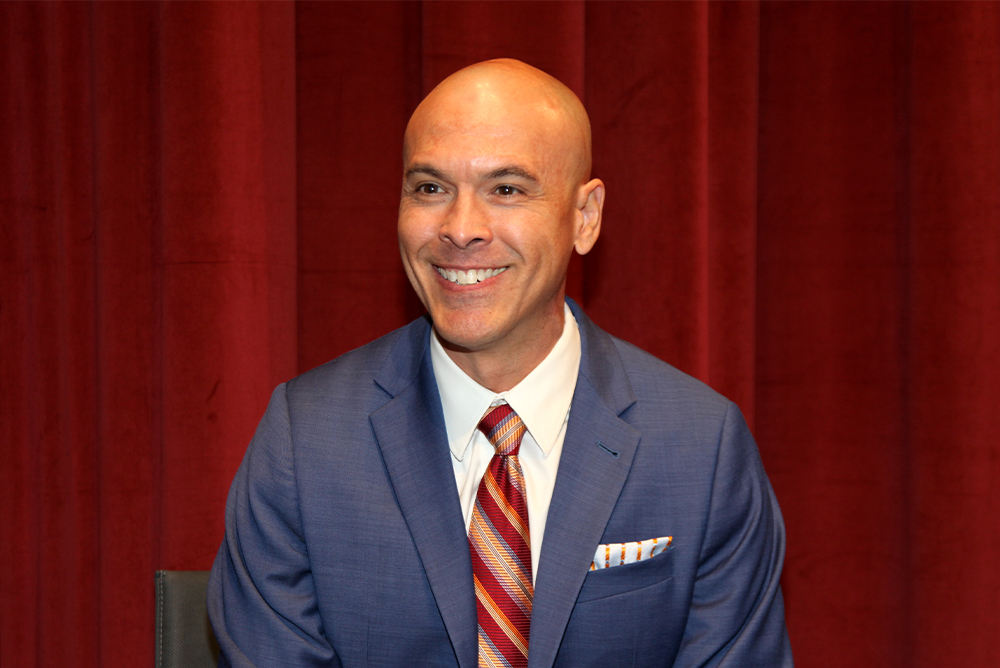
Photo by Aaron Salcido.
Noël Lipana is an Air Force veteran and social worker. Before joining us as a panelist for “What Is Our Responsibility for Our Government’s Wars?,” the first event in our Mellon Foundation-supported inquiry, “How Should Societies Remember Their Sins?,” he sat down in our green room to chat about transformation, his pitbull, and driving very fast.
Who was your favorite teacher in high school?
My AP English teacher Cris Greaves. I’m still in contact with her. She’s just a beautiful soul. She equipped us to deal with the world through the gift of literature and the humanities.
What’s your hidden talent?
I can drive most anything really fast; especially things on two wheels.
How fast is fast?
I’ve gone by police, and they haven’t caught me fast. Ironically I attended the CHP Driving Academy as part of one of my jobs, so I guess that’s a paradox, right? They taught me how to drive.
What’s the last performance you saw that you really loved?
I did this thing called Lit Crawl in Reno, and we got to hear some spoken word poets perform in a coffee shop. It was just that intimate setting and the personal connection with the material that they were delivering.
If you were a vegetable, what vegetable would you be and why?
I’m going cucumber because then you can end up a pickle at some point. It’s the ability to transform while keeping the core essence of what you are.
What’s your best low-stakes hot take?
Raisins have no place in desserts. That will bring me to really elevated levels of emotion fast.
What’s the last creative thing that you did?
If Lin Manuel Miranda and Quentin Tarantino had a love child on stage about moral injury and trauma, that’s my production Quiet Summons: A Healing Journey. I use performing arts to educate people about moral injury and trauma. I start off in the veterans’ space as a way to explain it, and show how it appears in other populations. We use spoken word poetry, dance, different music arrangements, storytelling.
What’s something that you do outside of your work to decompress?
A lot. I really just try to be mindful about where I’m at—what my friend calls having an instillable peace, regardless of where you are. So I love dogs, especially my rescue pitbull. I love being on my motorcycle; it’s a really consuming activity, you know? And so it doesn’t allow for other things to kind of invade that space. So it’s my form of meditation, I think.
We’ll leave you with a follow-up on your dog. What can you tell us about her?
She’s a blue-nose Staffy. She’s the second blue-nose that I’ve had. I got her from the same rescue that I got my first blue-nose from, and after I lost our first blue-nose, I was like I can’t have another dog for some time, and then I was going through withdrawals. And then we found her, and I was thinking Izzy would be a good name. “Izz-ilicious” is her nickname. She’s much more stout and compact than my other one. She looks like a ball of blueberry scone dough with ears.



